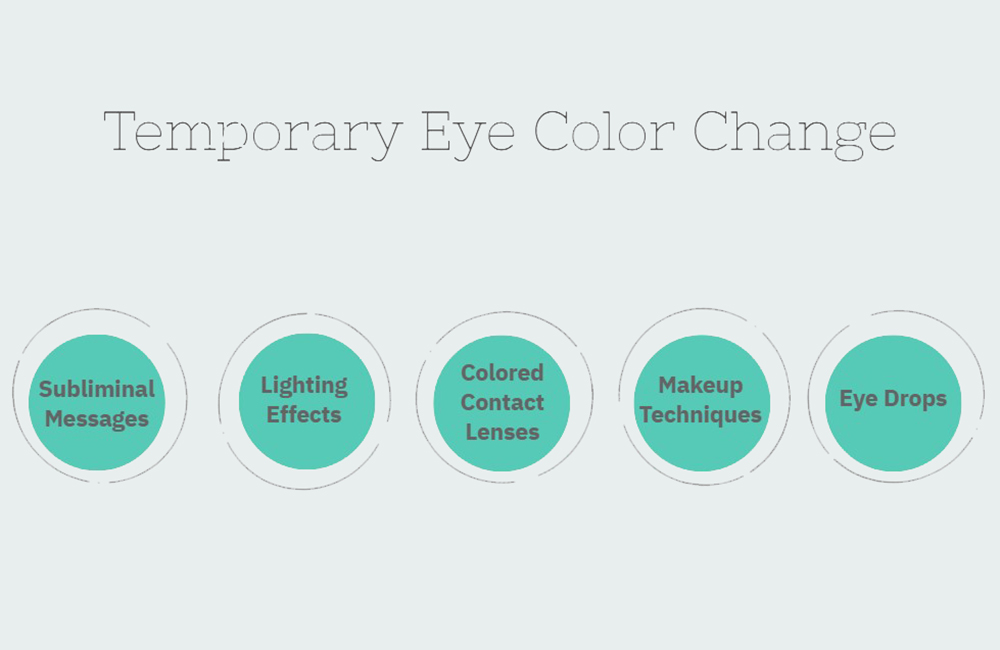Home /Temporary Eye Color Change


Temporary Eye Color Change: Safe Methods and Tips
Many people dream of having a different eye color, whether for a special occasion or simply to experiment with their appearance. While some may choose permanent solutions, others prefer temporary eye color change methods for their reversibility. This article explores the various ways to temporarily alter eye color safely, with guidance on choosing the right method and preserving eye health.
What is Temporary Eye Color Change?
Temporary eye color change refers to non-permanent methods used to alter the color of the eyes without undergoing surgical or irreversible procedures. Unlike permanent options such as keratopigmentation, iris implants, or laser depigmentation, temporary methods are typically non-invasive and designed for short-term use.
Methods for Temporarily Changing Eye Color
There are multiple techniques for changing eye color temporarily, including:
- Colored contact lenses
- Makeup techniques
- Lighting effects
- Eye drops claiming to alter pigmentation
- Subliminal messages and myths
Each method varies in safety, effectiveness, and duration.


How to Choose the Right Colored Contact Lenses
Choosing the right colored contact lenses involves several considerations:
- Skin tone compatibility: Warm skin tones pair well with hazel or green lenses, while cool tones suit blue or gray.
- Natural vs. dramatic look: Select colors close to your natural eye color for subtle changes, or go bold for dramatic effects.
- Eye size and shape: Lighter colors enlarge large eyes; darker tones add depth to smaller eyes.
- Occasion: Natural colors for daily wear, brighter tones for events.
- Brand safety: opt for reputable brands that prioritize comfort and eye safety.
Colored Contact Lenses: The Safest Option
Among all temporary methods, colored lenses remain the most popular and safest when used correctly. They are available as:
- Prescription lenses: For vision correction plus color.
- Cosmetic lenses: For aesthetic purposes only.
Wearing lenses prescribed by an eye care professional ensures a proper fit, reduces risks, and enhances comfort.
How to Maintain Eye Health While Using Colored Lenses
To avoid infections or irritation, follow these tips:
- Clean lenses daily using approved solutions.
- Store them in clean cases and change the solution regularly.
- Never share lenses with others.
- Remove before sleeping unless designed for extended wear.
- Schedule regular eye exams to monitor eye health.
Makeup Tricks for Enhancing or Altering Eye Color
Makeup can cleverly influence the perceived color of your eyes. Techniques include:
- Colored eyeliners to contrast and enhance natural eye tones.
- Eyeshadow in complementary hues (e.g., copper for blue eyes).
- Mascara in tinted shades for subtle enhancement. These tricks are affordable, temporary, and entirely non-invasive.
The Effect of Lighting on Eye Color Appearance
Lighting plays a huge role in how your eye color is perceived:
- Sunlight can make light eyes appear brighter.
- Indoor lighting may add warmth or coolness to the iris tone.
- Flash photography can make eyes look more vibrant or even a different color. This is a great way to experiment visually without any physical alteration.
Eye Drops That Claim to Change Eye Color
Recently, some brands have introduced eye drops that claim to lighten or change eye color by reducing melanin in the iris. However:
- There’s no FDA approval for these products.
- Risks include inflammation, dryness, and vision impairment.
- Long-term safety has not been proven in clinical trials. Always consult a doctor before trying such methods.
Are There Natural Ways to Change Eye Color Temporarily?
Some believe that natural methods like changes in diet, mood, or listening to subliminal messages can change eye color. However; These claims lack scientific backing. Subliminals are not proven to influence physical changes. Mood-based changes might cause temporary pupil dilation, but not color change. Overall, these approaches are based more on placebo effect than biology.
Can Diet Influence Eye Color Temporarily?
While there are anecdotal claims that certain foods can brighten eye color (like honey or spinach), no credible evidence supports this. However: A healthy diet may enhance overall eye clarity. Hydration can make eyes look brighter. But diet alone cannot cause a real shift in iris pigmentation.
Risks and Safety Precautions for Temporary Eye Color Changes
If you’re experimenting with temporary eye color methods, keep these safety tips in mind:
- Avoid low-quality or unbranded lenses.
- Follow strict hygiene protocols.
- Don’t overuse eye drops or subliminal audio.
- Seek professional advice if irritation occurs. Temporary eye color change is safe only when done under guidance and with quality products.
Temporary vs. Permanent Eye Color Change
temporary and permanent eye color change operations are different methods that each one has its specific advantages and disadvantages, including:
- Temporary Methods:
Reversible
Non-invasive
Affordable
Ideal for short-term use - Permanent Methods:
non-invasive (e.g., keratopigmentation, laser)
Long-lasting or irreversible
Require medical supervision
Higher cost
Feature |
Temporary Eye Color Change |
Permanent Eye Color Change |
|---|---|---|
|
Reversibility |
Reversible |
Long-lasting or Irreversible |
|
Invasiveness |
Non-invasive |
Invasive (e.g., keratopigmentation, laser, implants) |
|
Cost |
Affordable |
Higher cost and risk |
|
Medical Supervision |
Not typically required |
Require medical supervision |
|
Ideal Use Case |
Ideal for short-term use |
For those seeking a lasting change |
Keratopigmentation is currently considered the safest among permanent options due to its non-invasive nature and medical acceptance.
In conclusion, temporary eye color change is an exciting but delicate cosmetic decision. Whether you’re using lenses, makeup, or light tricks, always put safety first and consult professionals when needed.
FAQs About Temporary Eye Color Change
Do Temporary Methods Affect Long-Term Eye Health?
Temporary methods like colored contacts are safe when used as directed. However, improper hygiene, overuse, or low-quality products may cause: Dry eyes, Corneal infections and Allergic reactions
Is there a natural way to change eye color?
While some people believe that natural methods—like dietary changes or herbal remedies—can change eye color, there is no scientific evidence to support these claims. Such methods remain anecdotal, and no natural approach has been proven to alter the pigment or structure of the iris.
Are subliminal videos effective?
Subliminal videos claim to influence thoughts or behaviors by embedding subtle messages below conscious awareness. However, no scientific evidence supports their effectiveness, and most claims are anecdotal rather than proven by research.
Is keratopigmentation safer than lenses?
Yes, for permanent eye color change, keratopigmentation is generally considered safer than using cosmetic lenses over the long term. Unlike lenses, which carry risks of infection and irritation from prolonged wear, keratopigmentation involves a one-time procedure that avoids daily maintenance.
Telephone consultation

Response on working days from 9 to 21
We've got everything you need to make an informed decision about changing your eye color.
Consultation Services
During the consultation process, you can ask all your questions and explore various eye color change methods with our team of specialists. We provide all the essential information you need to make an informed decision about changing your eye color.


